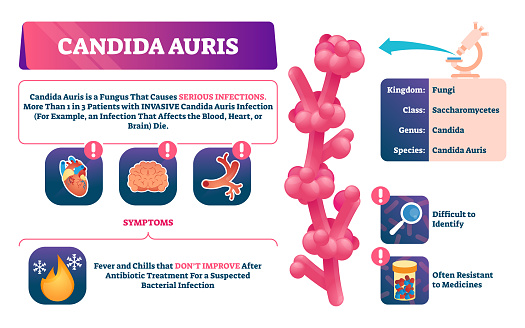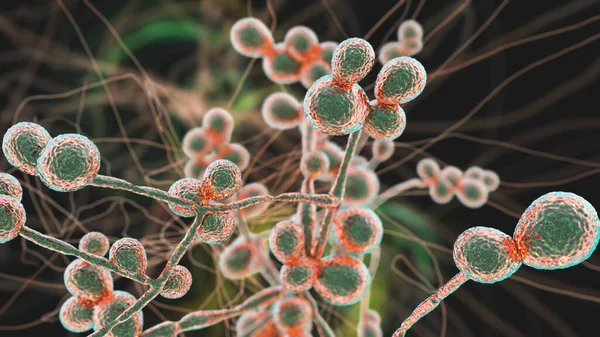Over the past decade, fungal infections have become a cause for concern as the mortality rate caused by fungal infections in humans has risen sharply. Starting from deaths caused by fungal poisoning to mold infections, such as the case of black mold (Mucormycosis) in India and now there is a new threat from Candida auris which has infected most of the United States. The spread of Candida auris has been recorded in more than half of the states in the United States, especially in Nevada, California, and Florida have the most reports of infection over the past 12 months. Let’s take a closer look at the spread and concerns caused by Candida auris.

A petri dish containing Candida auris in a lab in Wuerzburg, Germany. (Nicolas Armer/Getty Images)
Candida auris is one of the dangerous pathogenic yeast fungi that can cause severe to fatal infections in sufferers. The first case found as a Candida auris patient came from the external ear canal of a Japanese national patient in 2009 and since then Candida auris has become one of the microbes to watch out for and has been widely reported around the world. The main cause of the rapid spread of Candida auris to various regions is due to resistance to antifungal drugs commonly used to treat candida infections. Based on a report from the CDC (Centers for Disease Control and Prevention), some Candida strains are resistant to all three classes of available antifungals (fluconazole, amphotericin, and echinocandins). The spread of Candida auris can be easily transmitted through contact with contaminated surfaces or equipment, as well as from physical contact with infected patients, especially in health facilities such as hospitals have a high potential spread rate.

Biological description of Candida auris infection: symptoms, classification, and characteristics of labeled invasive disease. (source: http://www.vectormine.com)
Misdiagnosis and difficulty in identifying Candida auris in patients are also one of the causes of the misuse of appropriate antifungal drugs resulting in resistance. Therefore, rapid identification of Candida auris in treated patients is important so that health facilities can take preventive measures and specific treatment to stop its spread efficiently and quickly. The importance of the identification and diagnosis stage greatly affects the performance and prevention of antimicrobial resistance, so the role of the laboratory in correctly identifying Candida auris and various other pathogenic microbes is very important.
The identification of Candida auris has been quite a challenge over the past few years because some of the methods used still often experience misidentification due to the similarity of Candida auris with other Candida spp. There are several methods of identification of Candida auris that can be done either biochemically, phenotypic and characteristic methods, molecular, and Matrix-Assisted Laser Desorption/Ionization-Time of Flight (MALDI-TOF) spectrometry. All methods need to be carried out in a high-security laboratory because they handle infectious samples. In addition, to obtain precise and efficient identification results, each laboratory in health facilities needs to improve the facilities and instruments available in the laboratory. Molecular sequencing methods using Polymerase Chain Reaction (PCR) can be fairly easy because PCR equipment is available in most laboratories, but even so there are challenges in technique, time, and cost.
The level of security and laboratory readiness in conducting detection and identification plays an important role in fighting this threat from Candida auris. Proper identification, strict epidemiological surveillance, adequate treatment and prevention, and containment strategies, combined with collaboration from various parties (doctors, microbiologists, healthcare workers, security sector, and government) are needed to prevent further spread of this pathogen. Although resistance cases in Candida auris have not yet been found in Indonesia, this case draws attention to the potential antimicrobial resistance of other pathogens that can occur in Indonesia anytime and anywhere.
Source:
Centers for Disease Control and Prevention, National Center for Emerging and Zoonotic Infectious Diseases (NCEZID), Division of Foodborne, Waterborne, and Environmental Diseases (DFWED)
Fasciana T, Cortegiani A, Ippolito M, Giarratano A, Di Quattro O, Lipari D, Graceffa D, Giammanco A. Candida auris: An Overview of How to Screen, Detect, Test and Control This Emerging Pathogen. Antibiotics. 2020; 9(11):778. https://doi.org/10.3390/antibiotics9110778


Leave a Reply